The Peterson Health Technology Institute (PHTI) announced today that its initial assessments will focus on remote patient monitoring (RPM) for diabetes management and virtual musculoskeletal care. These assessment reports will inform payers, providers, and patients on the clinical and economic impact of the technologies and will be released and freely available online early next year.
As 80% of digital health products lack clinical evidence and many are not subject to U.S. Food and Drug Administration review, PHTI, which launched in July, will also evaluate several other timely, high-impact clinical areas in 2024.
PHTI will conduct its evaluations using a custom assessment framework, made public last month, which assesses the technology’s clinical benefits and economic impact, as well as effects on health equity, privacy, and security. The evaluations aim to identify the most promising aspects of digital health innovation, accelerating the adoption of high-value technology in healthcare.
“PHTI is targeting digital health tools that address complex health problems and have high potential to improve outcomes and affordability for both patients and payers,” said Caroline Pearson, Executive Director of the Peterson Center on Healthcare. “We will gather insights from stakeholders across the healthcare industry to provide input about which key areas of health technology would benefit from our independent evaluations.”
Technology Categories for Initial Assessments
PHTI’s first assessments will focus on RPM for diabetes management and virtual care for musculoskeletal conditions. Each represents a robust set of technology-enabled interventions that claim to deliver clinical outcomes, better treatment adherence, and an improved user experience. PHTI’s evaluations will review and analyze the evidence in each of these categories and provide information to guide healthcare purchasers’ decision-making about these tools.
Diabetes Remote Patient Monitoring
Diabetes, which affects 11% of the U.S. population, is the most expensive chronic condition and disproportionately affects people of color and lower-income communities. Diabetes care requires significant self-management and support to monitor and control one’s blood glucose — measured through A1C levels. In recent years, many digital health companies have been launched to support people with diabetes through remote patient monitoring using blood glucose measurement and patient engagement. These technologies claim improvements in blood glucose control, along with a range of secondary health effects that may include weight loss, changes in prescription drug use, and improved mental health, cardiac health, and joint pain.
Virtual Care for Musculoskeletal Disorders
An estimated one-in-two adults in the U.S. experience musculoskeletal disorders, costing nearly $400 billion per year. Low back, hip, and knee pain are particularly common causes of disability, affecting people’s ability to work and quality of life. For many patients, access to physical therapy can result in pain reduction, improved mobility, and fewer surgical interventions. Virtual physical therapy includes a range of digital health solutions that claim many of the same benefits of in-person physical therapy through enhanced access to a virtual platform and the convenience of participating at home on patients’ own schedules. These technologies may include live physical therapists, artificial intelligence-enabled chat bots, and wearable sensors to help ensure the user is performing exercises correctly.
Future Areas of Interest
PHTI is considering a range of timely, high-impact clinical areas for evaluation in 2024. Across those condition areas, digital health companies are deploying technologies—including artificial intelligence—that aim to facilitate site of care shifts, enable virtual- or hybrid-care delivery, conduct RPM, and deliver self-administered diagnosis and therapy.
PHTI’s selection process includes identifying therapeutic areas and types of services that are driving significant levels of spending; are experiencing rapid growth, digital innovation and investment; and have a strong evidence base and measurable outcomes to inform clinical and economic impact assessments.
PHTI solely determines its selection of assessment areas, and is informed by data and published literature, research on new technologies to augment and replace traditional care delivery models, and input from purchasers and end-users, including health plans, employers, and providers.
Robust stakeholder engagement guides the selection and assessment process, including input from a Purchaser Advisory Council, clinical experts, provider groups, and patient representatives. Companies included in assessments are asked to provide additional data and information that may inform reviews.








